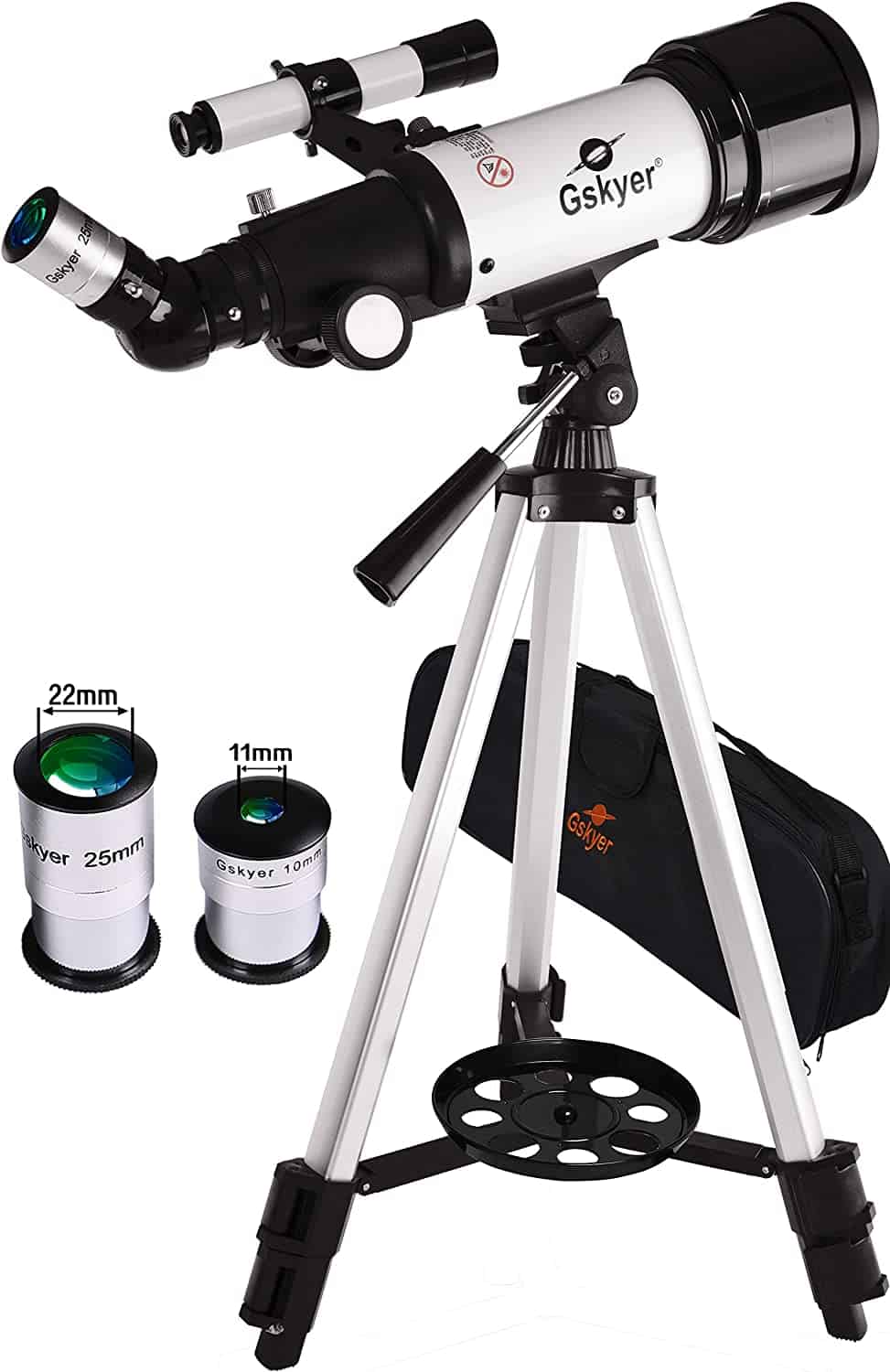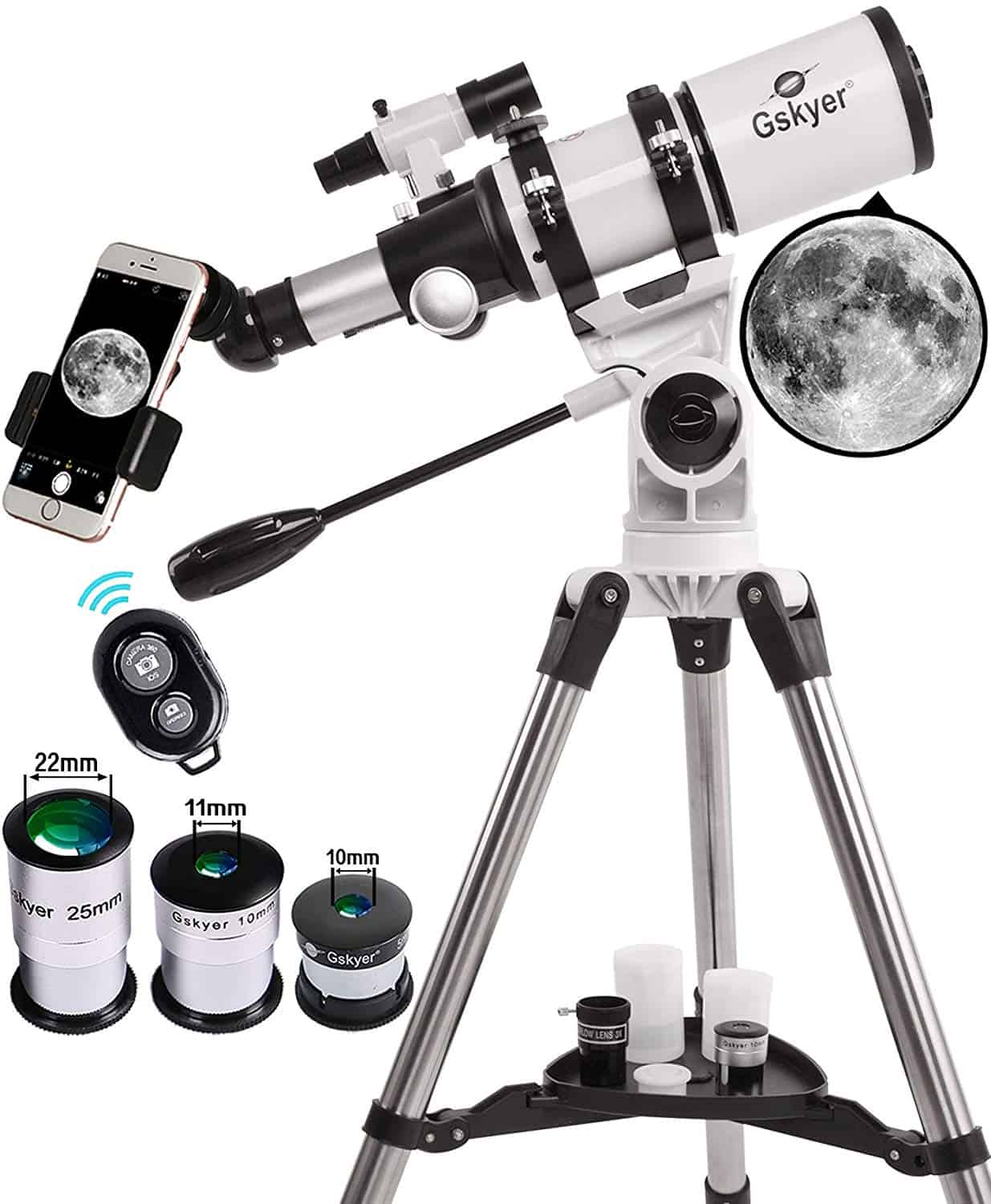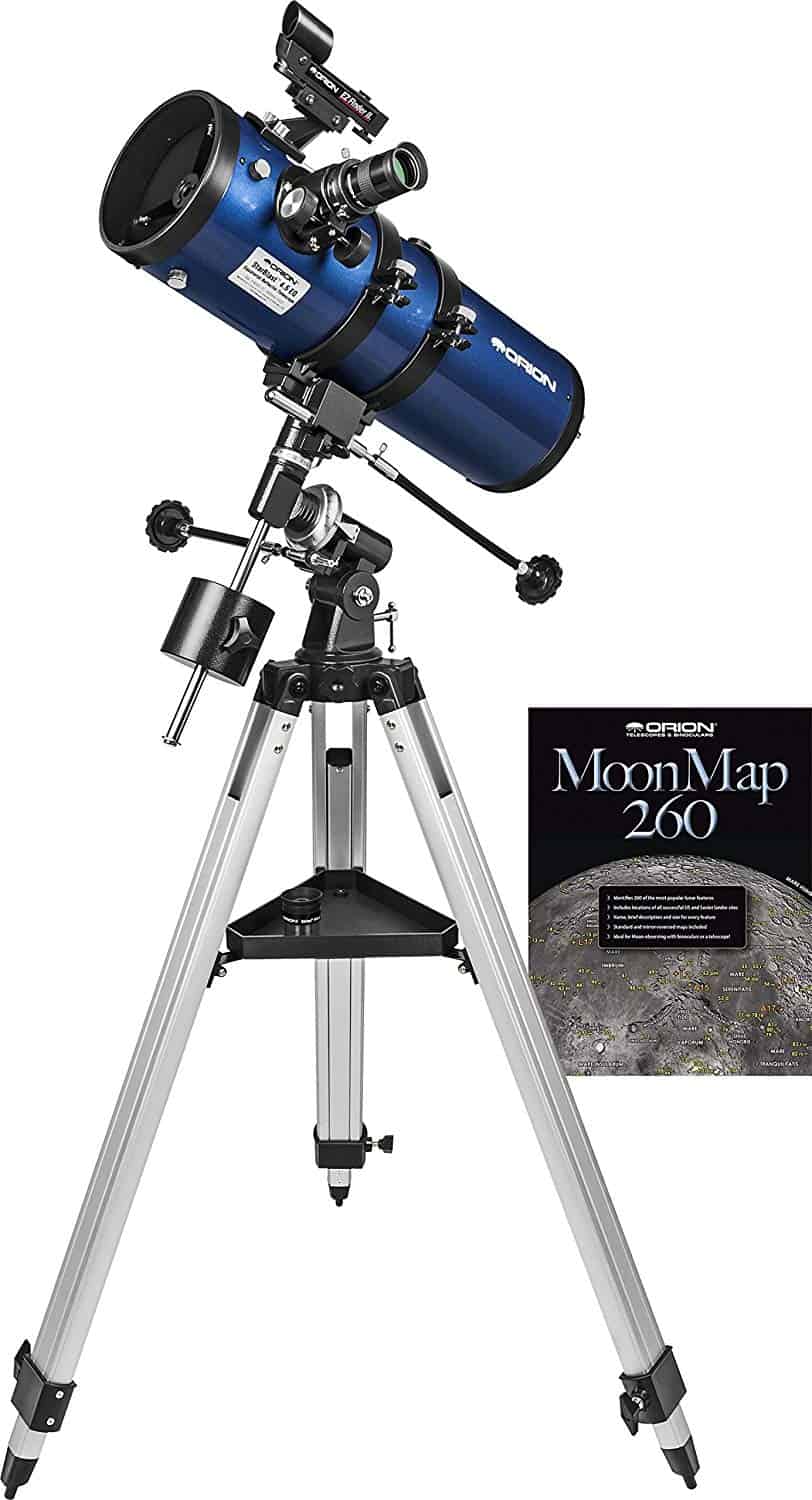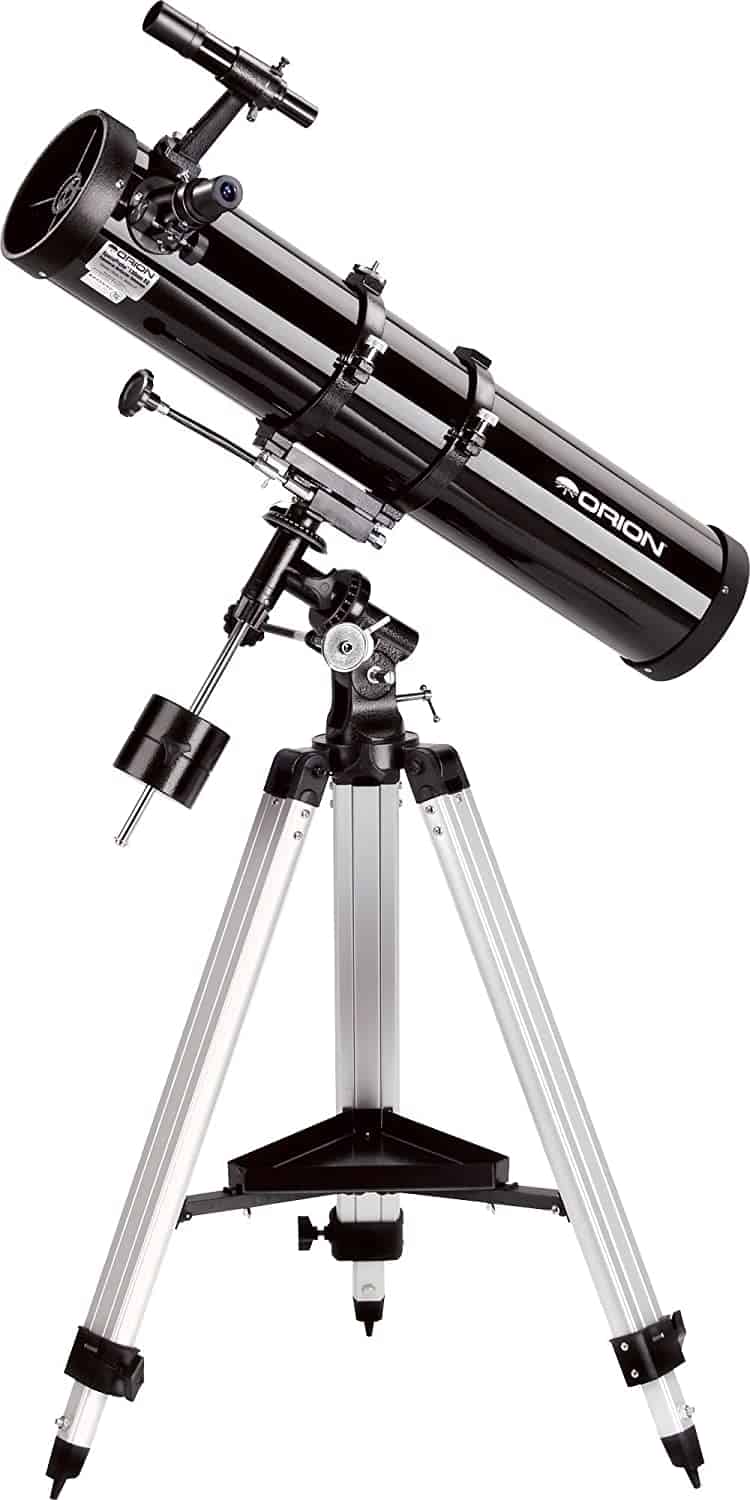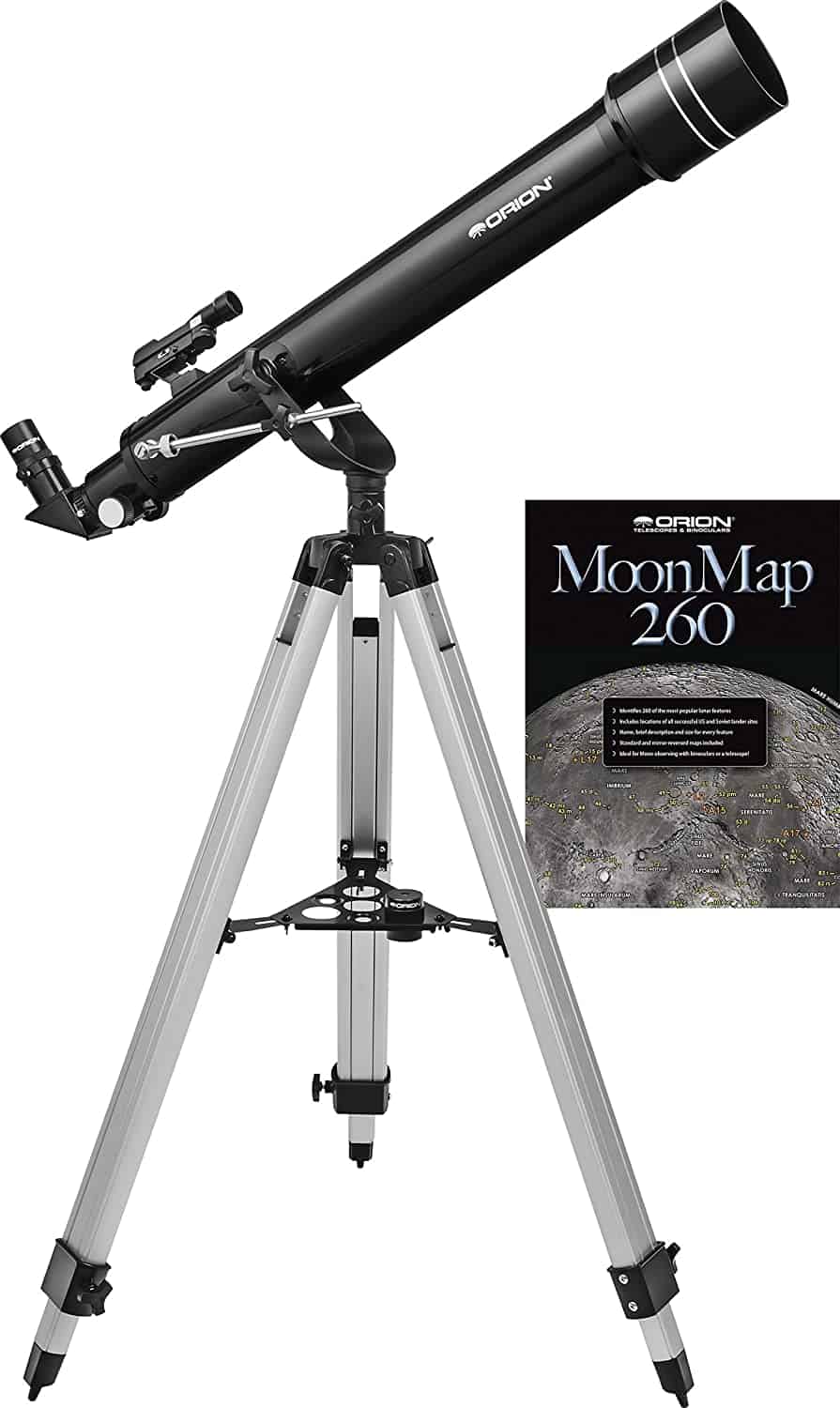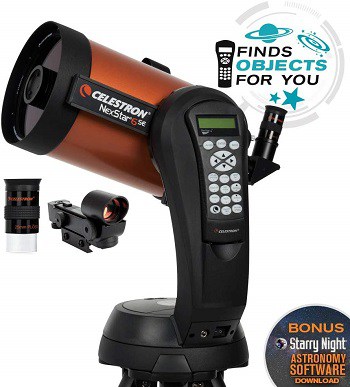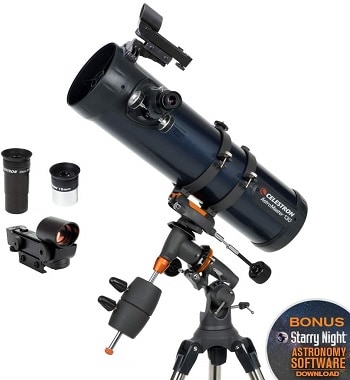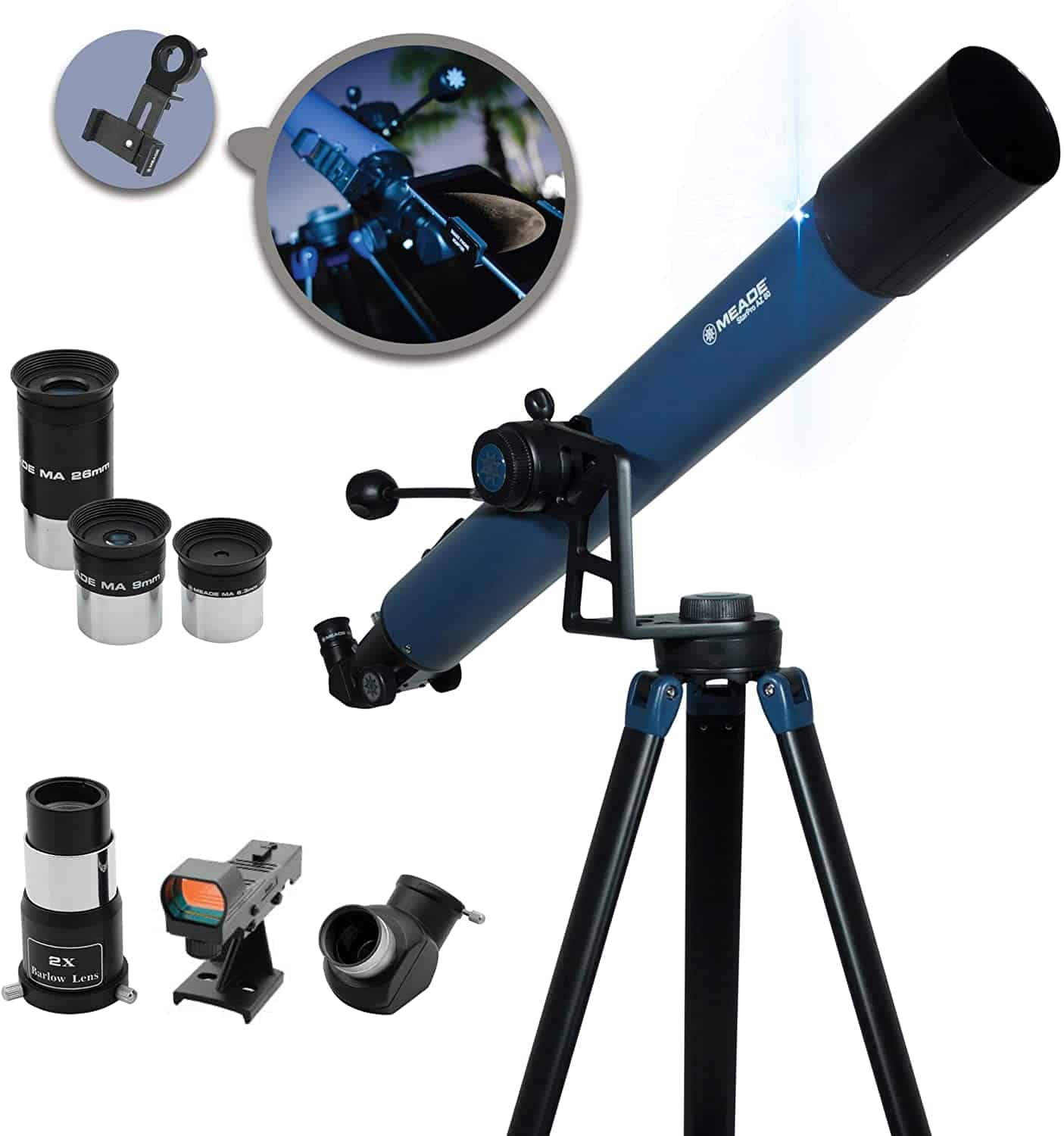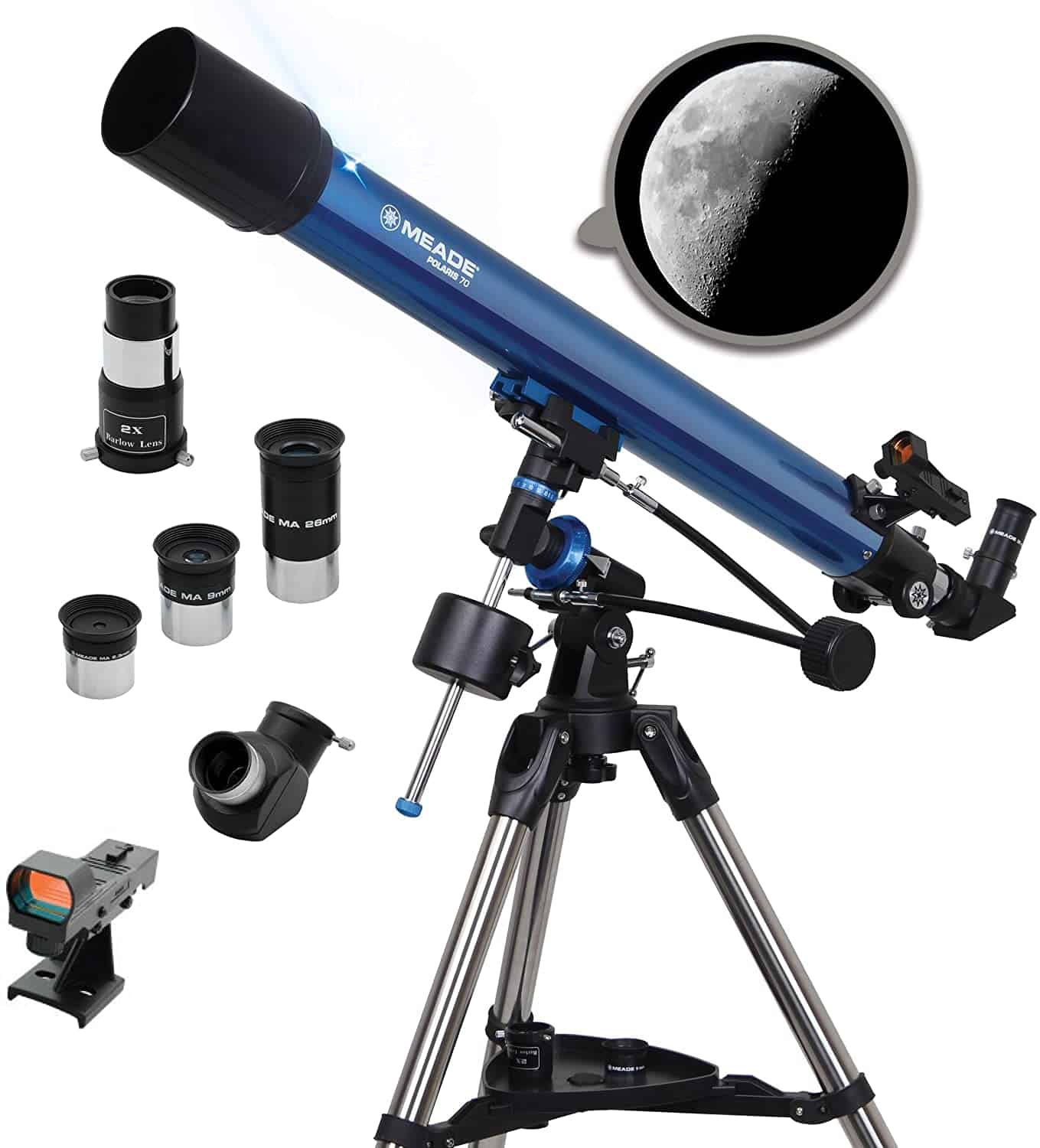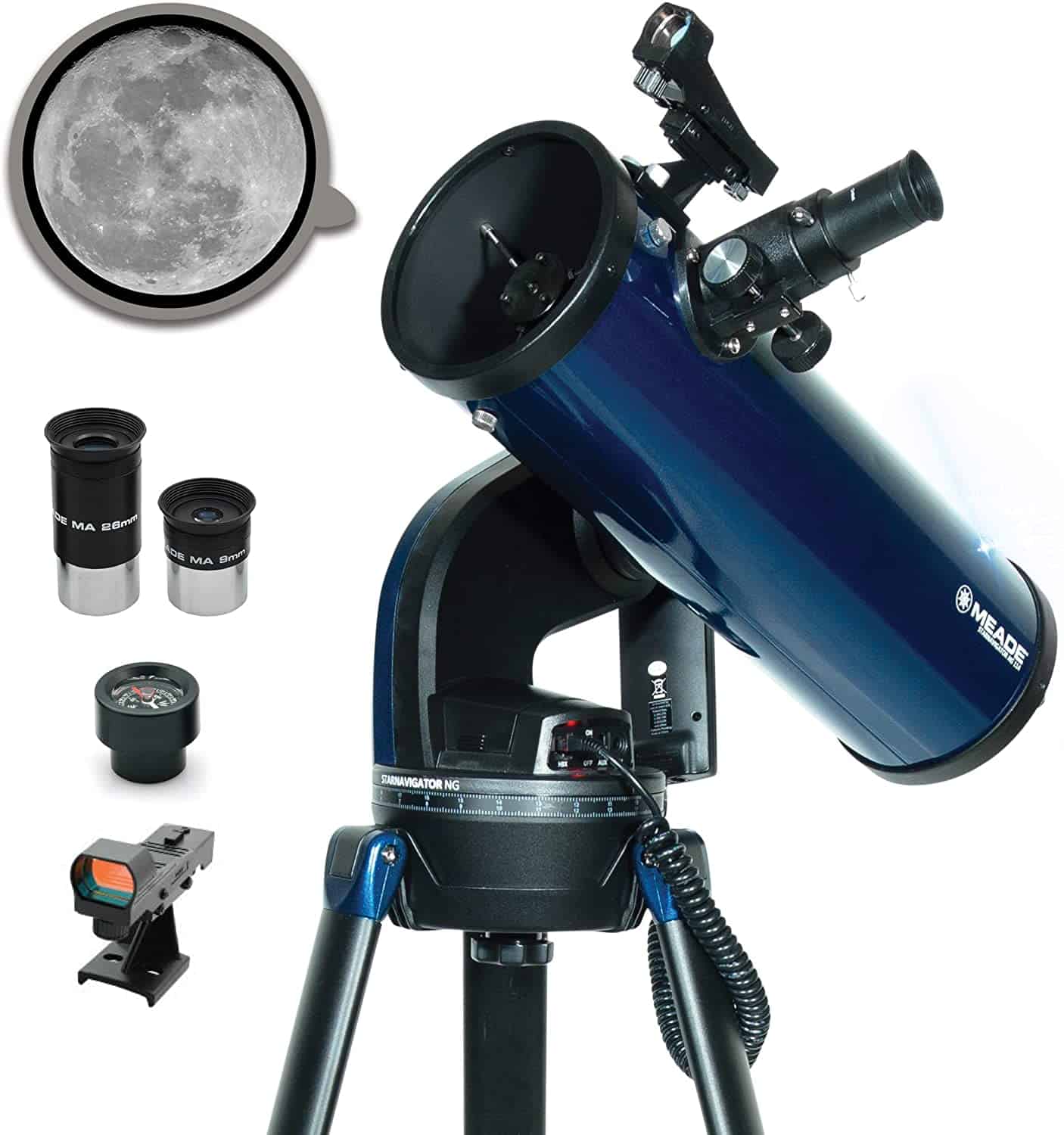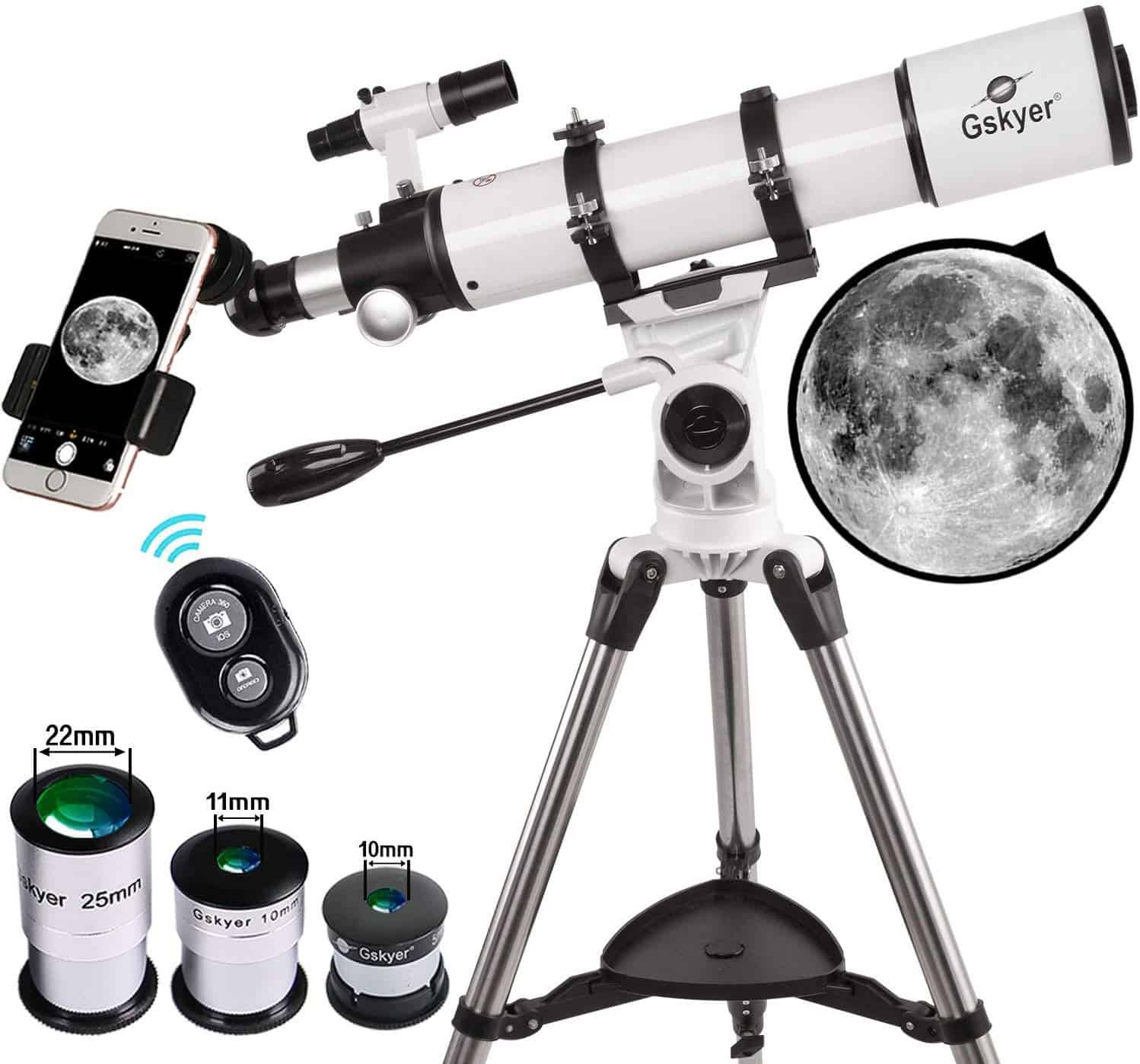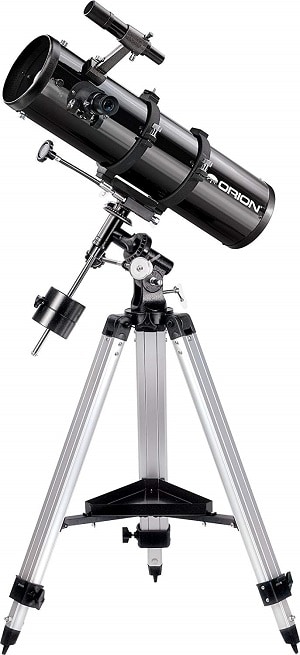A telescope is more than a typical optical device as it allows you to have a look of objects that are beyond the limits of our skies. In today's world, where it is important to have at least minimal knowledge about all fields to succeed in life, a telescope comes in handy as it increases our knowledge of space and time while creating a fun experience.
Even for people who otherwise seem disinterested in the field of astronomy, when encountered by a telescope, do feel fascinated by the capabilities of this device. Many companies have entered the race in the astronomical world to increase the precision of our knowledge by aiding us with advanced technology telescopes with specs we have never encountered before.
When it comes to Telescopes, the companies Gskyer, Orion, Celestron, and Meade offer the best products. To ease the burden off of your shoulders for deciding between various companies and different telescopes, we have put together the reviews of a few Best Gysker vs. Orion vs. Celestron vs. Meade Instruments Telescopes.
Let's get started!
Our Overall #1 Rated Pick
The Gskyer are manufacturing the best and most used telescopes. Many people are deeply involved in stargazing and observing distant planets and stars. This Gskyer 70mm aperture travel telescope is the best fit if you are a beginner or a hobbyist astronomer.
It features a high-quality lens and a 400mm focal length. The lens is fully coated optics glass that creates premium quality and extraordinary sharp images. The size of this Telescope is perfect for traveling purposes and can fit into a storage bag easily.
The 10 Best Telescopes Comparison Chart
Image | Product Name | Ranking | Price |
|---|---|---|---|
1 4.10 | |||
2 4.40 | |||
3 4.80 | |||
4 4.90 | |||
5 4.40 | |||
6 4.10 | |||
7 4.40 | |||
8 4.50 | |||
9 4.40 | |||
10 5.00 |
The 10 Best Telescopes Out There
In this section, we compare the Top 4 telescopes brands available for amateurs and professions.
The Gskyer are manufacturing the best and most used telescopes. Many people are deeply involved in stargazing and observing distant planets and stars. This Gskyer 70mm aperture travel telescope is the best fit if you are a beginner or a hobbyist astronomer.
It features a high-quality lens and a 400mm focal length. The lens is fully coated optics glass that creates premium quality and extraordinary sharp images. The size of this Telescope is perfect for traveling purposes and can fit into a storage bag easily.
Moreover, the optical lens protects the eyes from harmful rays of stars, moon, and sun. The two replaceable eyepieces and a 3x Barlow lens come as accessories with the Telescope. The Telescope also has a tripod with a moveable mount.
You can angle the mount at your desired position and observe the celestial objects in a comfortable environment. The wireless controls: smartphone adapter and a camera remote control are the two exceptional features that make this Telescope famous and the best traveler telescope today.
PROS
CONS
The Gskyer telescopes are famous for both beginners and professionals. You can use Gskyer at all levels from entry to advance. It will help you observe divine celestial objects like planets, moon, and stars.
It is an 80mm astronomical refractor telescope with German technology. The Telescope has fully coated optical glass that created sharp and premium quality images. It also protects the eyes from rays emitted by celestial objects.
The Telescope comes with an aluminum tripod having a moveable mount. You adjust the angle of the mount at your desired position and observe the astronomical elements. If you are planning for a countryside stargazing, then this should be the perfect choice to carry with you.
The magnification power is excellent because it will create very sharp images of distant planets even at night. Moreover, the Telescope also comes with three replaceable eyepieces and a 3x Barlow lens for higher magnification.
The Telescope has a high-quality finder scope that helps to locate the distant planets, stars, sun, and moon. In short, this Telescope is the best combination of quality and affordability.
PROS
CONS
The Orion StarBlast reflector telescope is the best entry-level all-purpose Telescope. It is a very reasonable option for a beginner and hobbyist astronomer. The Telescope has sufficient aperture that will help to observe distant celestial objects.
It will also create sharply focused and premium quality images. The wide-field view of the Telescope captures far-reaching landscape views. If you are interested in visiting the countryside for stargazing, then this Telescope will be the best choice to carry with you.
The high magnification power eyepiece and a 2x Barlow lens generated high-quality images. Moreover, it comes with a complete kit that includes a moon map and general distant objects observing manual that has details about more than 60 locations.
The 52-degree wide-angle view will capture extraordinary landscape and sky images. This is not it; the top LED light provides the extra brightness under the night sky. The Orion StarBlast is providing a telescope with accessories that you need to get started without being the burden on your pocket.
PROS
CONS
The Orion SpaceProbe reflector telescope is an advanced beginner's telescope. It is a very reasonable option for a beginner and hobbyist astronomer. The Telescope has sufficient 5.1" aperture that will help to observe distant celestial objects.
It will also create sharply focused and premium quality images. The aperture of the Telescope allows a decent amount of light to create bright and sharp images of divine celestial objects like galaxies, nebulas, star clusters, and planets. The 24" long optical tube is feasible to move around and makes the telescope travel-friendly.
It is a very versatile telescope and has features that anyone can understand. In short, it is easy to operate. Moreover, the 2x Barlow lens doubles the magnification power of eyepieces. It also comes with a Star Target Planisphere and a moon map that helps in stargazing.
The benefit of this Telescope over others is its sleek style, easy understanding, exceptional features, and a complete guidebook for an amateur astronomer.
PROS
CONS
The Orion is famous for manufacturing the best beginners' telescopes having amazing features. It is a 70mm refractor telescope and a focal length of 700mm. If you are planning to go on stargazing trips or just to watch deep, celestial objects, then this Telescope will be one of the best things with you on the trip.
It is a splendid telescope for beginners and hobbyist astronomers who want to enhance their astronomical knowledge. The durability of the Telescope is amazing as you can take it to places far away from cities from stargazing.
Moreover, the adjustable tripod mount is one of the best features of this Telescope. You can adjust the angle at your desired position and observe the distant object like stars, moon, planets, galaxies, and more. The telescope kit includes two eyepieces, moon map, red-dot finder, and pinion finder.
PROS
CONS
The Celestron NexStar is the Best Telescope for astrophotography under a very decent budget. It is a computerized telescope and a sleek tube design. The large aperture of the Telescope allows sufficient light to enter to produce a sharp and bright image.
It is an advanced technology telescope that will require a collimating to perform. The beginners will get used to it after a few practice sessions. Moreover, the fully automated mount helps to observe more than 40,000 divine celestial objects. It locates and tracks the distant planets, stars, moon, galaxies, and star clusters for you.
The assembly of the Telescope is complex, and it's travel friendly. The Telescope comes with a SkyAlign technology that helps you Align the Telescope in minutes. In addition to all the luxury features, the Telescope also comes with a free Starry Night Software.
PROS
CONS
Set out on your journey over the Universe with the Celestron AstroMaster, the ideal decision for a beginner astronomical learner. The Telescope offers the best features to its users and has become one of the famous travel-friendly telescopes in the market.
It is an exceptional combination of quality, power, and value. The heart of the Telescope is its 130mm optical glass lens. It creates high quality, sharp, and focused images. The mount of the tripod comes with the Telescope is slow-motion, and you can adjust it at your desired position.
The design of the Telescope is compact and easy to carry around. You can easily take it with you on countryside trips for stargazing and locating celestial objects. The Telescope comes with extra useful accessories like two eyepieces, a tripod, and a scope finder.
Moreover, the users can download the Bonus Starry Night Astronomy Software for further help. This software will help you observe divine celestial objects with ease.
PROS
CONS
The Meade Instruments manufactures the innovative and high-quality Telescope for both beginners and professionals. It has an 80mm aperture that captures the premium quality and sharp images. The smartphone adapter facilitates capturing pictures of celestial objects like stars, planets, galaxies, and moon.
It comes with three different magnifications of eyepieces and a 2x Barlow lens that doubles the magnification power of the Telescope. If you are interested in visiting the countryside for stargazing, then this Telescope will be the best choice to carry with you.
Moreover, the adjustable tripod has a moveable mount. You can adjust the position of the mount at your desired angle and observe the distant objects. The red-dot finder helps in tracking and locating the objects at day and night.
PROS
CONS
The Meade Instruments 70mm telescope is the best and convenient Telescope to use. It is easy to assemble and safe for travel. If you are planning to go on stargazing trips or just to watch deep, celestial objects, then this Telescope will be one of the best things with you on the trip.
It is a splendid telescope for beginners and hobbyist astronomers who want to enhance their astronomical knowledge. The Telescope has a 2.8-inch aperture and a 70mm refractor optical design. It also comes with extra eyepieces and a 2x Barlow lens that enhance the magnification power of the Telescope.
Moreover, this Telescope is delivered with a complete instruction guide and astronomy software that helps you to explore the sky. It is considered a travel telescope. That is why the frame is sturdy yet lightweight.
The large aperture provides the users with bright and clear images of faraway celestial objects like stars, moon, planets, galaxies, and more. All of these features made this Telescope the best to use with exceptional range.
PROS
CONS
The Meade Instruments made one of the finest products in the telescope range. It has sufficient aperture that helps to capture clear and bright photos. You can see all celestial objects both at day and night.
If you are planning a stargazing trip toward the countryside, then this Telescope is all you need. It has a sharp focus, travel-friendly, lightweight. The Telescope has a fully computerized single-arm mount that operates at 12V DC servo drive.
Moreover, the Telescope comes with additional accessories like the Barlow lens helps to enhance the magnification power of the eyepiece. Telescope has a sturdy yet lightweight tripod with an adjustable mount that has slow and smooth movement to track more than 30,000 celestial objects. The red dot finder in the lens helps to locate the astronomical object while observing.
PROS
CONS
Buying Guide
Now, with the increasing interest of masses in the field of astronomy and understanding the true realities of the limitless void that exists beyond the limits of the earthly skies, many companies have emerged with multiple options of telescopes.
The branding of technical devices such as telescopes is not appreciated in the scientific community; however, these new emerging companies have only added healthy competition to the game. These days every manufacturing brand wants their telescope at the top of the game to increase their sales and market value, so they are continuously working towards the betterment of the technology and addition of new specs to the optical device.
So, to help you choose from the diverse range of telescopes offered by these companies, we have created a list of essential features to be considered before purchasing a telescope.
Gysker vs. Orio vs. Celestron vs. Meade Instruments
Gskyer, Orion, Celestron, and Meade; these four are indeed the best and foremost brands in terms of quality in astronomical equipment. These leading brands have been competing against each other for long, and this competition has borne nothing but fruitful advancements that have helped the field of astronomy grow to facilitate science enthusiasts of all ages.
There isn't much difference between the qualities of these brands, but the main difference only lies in cost and customer care relations. For example, Orion offers just a one-year warranty, whereas Celestron offers a whopping two-year warranty.
The cost of telescopes offered by all brands varies according to the advanced features, but all of these brands have introduced premium quality telescopes for children as well within normal price ranges.
Aperture
The basic mechanism of a telescope is mainly concerned with gathering light rays that have been deflected off of distant surfaces and then focusing those rays to one common point to form a magnified image.
There are many essential components of a telescope, and the size of the aperture is one of them. The diameter of the distal end of a telescope bearing the objective lens or a curved mirror is called the aperture.
As the width of the aperture increases, a greater number of light rays are able to enter the objective lens and thus result in a clearer image. This property also factors in for the brightness of the image as a wider aperture guarantees sufficient light being absorbed from the environment to form a brighter image of the object at the focal plane. The size of the aperture can be easily located within the scientific gibberish present in the overall information section of a telescope's description. The width of the aperture is often accompanied by the magnification power and written somewhat as 700x60; in this example, 60 mm is the diameter of the objective lens.
Magnification Power
An optical device such as a telescope has only one major function, and that is to make distant objects magnified in the eye field. It is a tool that helps create a magnified image that would have been otherwise impossible for the unaided eye.
So, from this property, we can deduce that magnification is one of the most vital functions of a telescope. The magnification power is dependent on one very basic phenomenon of the optical world, aka the focal length.
The focal length and the magnification power are practically the same things, but often they are mentioned separately, in simple words, they have a direct relation. The focal length is the distance from the center of the objective lens to the focal plane, where an image is supposed to form from the concentration of light rays.
The magnification power can be easily located amidst the highly convoluted information in the description, along with the aperture size. Taking the prior example, in a 700x60 telescope, the 700x indicates the magnification power.
If explained in simple words, the telescope has the ability to make an object appear 700x times closer and clearer than the otherwise unaided eye would have perceived. The higher the magnification power, the more distance you will be able to cover, and a clearer picture will be produced of the understudy object. However, there is a con to higher magnification power, and that will be explained in the section about the field of view.
Field of View
The field of view of a telescope is the ability of a telescope to focus on a particular area at once. The limit of the telescope to which it can observe the world at any given moment. For a telescope, the total amount of area of sky it can cover to appear as viewable on the screen or eyepiece is its field of view.
The field of view of telescopes is often mentioned in square degrees or in arc-minutes, as an example to explain the concept a little better, let's consider the human eye. The field of view of a human is 120 degrees, so on a typical day with normal eyesight, a person can view one-third of what is around them.
The field of view for telescopes is much less than humans for a lot of different reasons, and magnification power is one of them.
Exit Pupil
The exit pupil is the only passage out for all the light rays that have entered the telescope through the aperture. There is a common misconception that the eyepiece and the exit pupil are either the same size or are the same thing.
In reality, they could not be more different than each other; however, they do have a direct relation. The eyepiece is the proximal part of the telescope designated for humans to place their eye and have a peek at the magnified image of the celestial object.
The exit pupil is the exit way for the light rays of the magnified image that has been constructed at the focal plane. We can only view as much of the image as the exit pupil allows, as only a limited number of light rays come out of it.
For telescopes, the size of the exit pupil does not matter much as it is fairly constructed, so, at any given moment, the human pupil does not dilate more than the size of the exit pupil. The images being constructed at the focal plane are also visible on the digital screen associated with most advanced telescopes.
Digitalization
With our increasing dependence on technology for every field, including research and analysis, it is essential that all devices related to such analytical fields must adapt to this increasing demand for digitalization of our age.
Most of the newer telescopes are equipped with advanced technology that includes digital screens and internal software that can connect to other devices as well. This feature of a telescope is particularly useful for research purposes and also crucial for saving any or all rare moments that appear in the deep, dark, and mystical space above our heads.
A telescope that has all the advanced features that connect it with other digital platforms will always triumph over one that does not have such abilities.
Accessories
There are many accessories that can enhance the functionality and practicability of a telescopic device. It is essential for a telescope to be placed at a steady surface and stealthy angle to cover the required area and produce a good quality image.
Three accessories that add to the stability of a telescope over any surface are the most vital ones.
Base Support
The base support is the basic system that allows steadiness to the telescope, stands at first place for being the most vital accessory.
Base support provides stability to a telescope over any type of surface, but of course, it is essential to identify the type of surface you will fix for your telescope to choose the appropriate type of base support for that surface.
Tripod Stand
The tripod stand is of no less importance to the base support as it is also an essential accessory to add stability to this delicate device. In addition to steadiness, a tripod stand also aids in the comfortability of a telescope.
A tripod stand is adjustable in relation to length, so you can fix it at the point where you can view the space at a comfortable posture rather than putting unnecessary pressure on your spine while bending to the height of a telescope.
Mount
A mount is the third accessory that goes on top of a tripod stand to provide a deadlock connection between tripod stand and the telescope, so the safety is further enhanced. The mount is obviously moveable to fix the angle of the telescope as per your desire.
These are just some of the accessories that are deemed essential by professionals and are necessary for an astronomy enthusiast. Most companies add these accessories to the package while marketing their devices, and evidently, such companies triumph over those who sell these accessories separately.
Portability
For professionals as well as others who dare to purchase a telescope, one very crucial thing related to this device is its portability. As we have a basic working knowledge of a telescope, we know that it contains many lenses and mirrors that are vital for its functionality, and any slight shift in their angle or any integral damage can result in a drastic loss of image quality and devastating aberrations.
Most often, the miraculous appearances of celestial wonders can only be seen from deserted areas or higher planes such as mountain tops, which requires significant travel carrying these optical devices.
The ability of a telescope to break down into safe components to be reassembled safely is a life-saver if made probable. Secondly, a carrying bad that has the ability to safely store all related accessories in addition to the basic telescope is also a part of the portability. It is an under-rated but very valuable accessory as it takes away a lot of tension off of traveling with a telescope.
FAQs
How do I choose between different brands of a telescope?
First, it is essential to pan out your needs in a telescopic device. There is a diverse range of features that add to different specs of a telescope, making them specifically good for varying purposes.
It is preferred to choose whatever telescope that fits your desires and needs without considering the brand as it is more about science than about the capitalistic world.
Why do telescopes have a limited field of view?
It is impossible for a telescope to obtain a peripheral view because of its model of construction, and thus, a limited field of view is created. A limited field of view has more benefits than it has cons, as it helps in the production of a clear and more focused image of a certain object rather than giving a view of a wide range of areas with limited details.
How to use a telescope effectively?
As with the help of our buying guide, you already understand the basics of a telescope, so we are going to jump to the main solution to this problem, which is effectively locating a point or object in space.
For a beginner, a telescope that has go-to systemic controls that can automatically signal towards significant star sightings will solve the problem. But in case your telescope does not have these controls, you will have to get a star map specific for the location of sighting you have chosen to help you locate any object you are looking for.
Final Words
A telescope is a device that disobeys any rules of putting a limit to our abilities and approach. Let's all devise a little instigation from this device and never limit ourselves to one field of study, rather approach the world as a whole and absorb as much knowledge as we can from this ever giving world. Choose one of the Best Telescopes that we have reviewed above and have a great time star gazing!
Happy Star Gazing, People!

